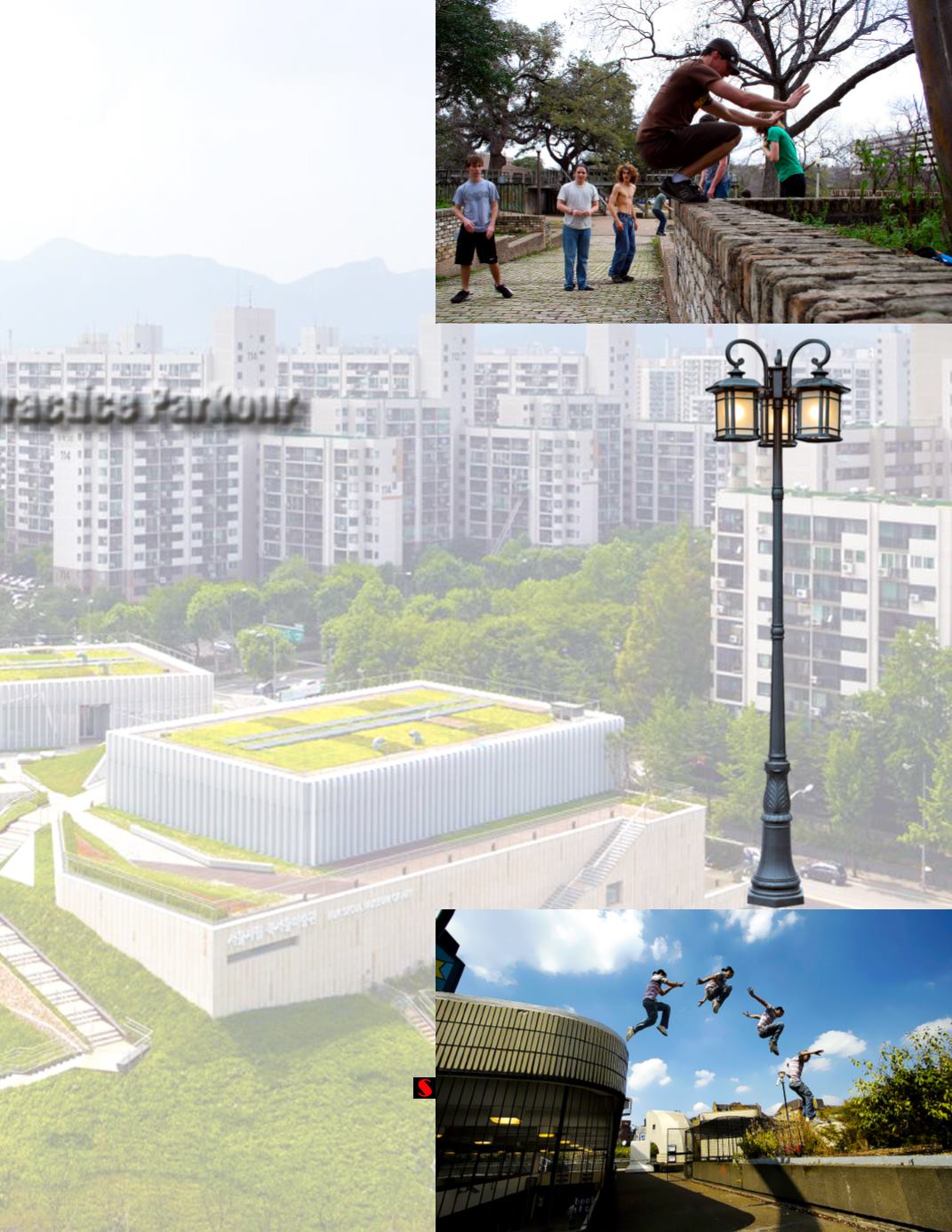

ractice Parkour
have safety cushion. The biggest
drawback is obviously children.
You don’t want to trample kids or
enrage their parents. Avoid practic-
ing near kids whenever possible.
3. Beaches
The beauty of beaches resides
in their mercy. Sand is a forgiving
surface. You’ll have a hard time
finding climbable structures, but
you have all the space you could
ever need for flips and tricks. Don’t
forget the sunscreen. You may be
more worried about leaving with all
your bones intact, but sunburn isn’t
fun either.
4. Gym
For a more controlled, artificial
environment (which, yes, sort of
runs contrary to the philosophy
of parkour), go to a gym. A place
with mats, trampolines and bal-
ance beams is the safest and most
effective place to hone your skills.
If you slip up, you shouldn’t get
hurt too badly, and gym employees
will be able to get quick medical
attention. For novices, we actually
recommend this route above all
others. See what you’re capable of
before you take it to the streets.
5. Open field
Like the beach, an open field pro-
vides a great area to practice flips
and rolls with a fairly soft surface
underfoot.
6. Wheelchair ramps
Looking for sturdy rails? Wheel-
chair ramps are a great place to
start.
7. Forests
Forests are another excellent
public space. Trees come in many
shapes and sizes, and a romp
through the woods will always be
somewhat unpredictable. Practic-
ing in forests is a great way to
improve your flow and improvi-
sational skills. You can also use
streams, bridges, logs and rocks
as plat-
forms and
obstacles.
Should you
fall, the for-
est floor is
a lot nicer
than an
alleyway.














